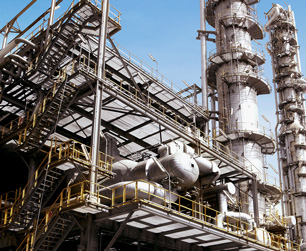Dichloromethane (DCM)
| EPA Maximum Contaminant Level (MCL) |
0.005 mg/L |

Dichloromethane (DCM) is an organic chemical used in paints and paint removers, degreasing and cleaning fluids, chemicals, textiles, electronics, metals, and plastics. It's also used in agriculture, as a pesticide for strawberries and grains, as a method for removing the green from citrus fruits, and—though rarely nowadays—in the extraction of caffeine, cocoa, fats, spices and beer hops.
DCM typically ends up in water through discharge from factories.
Health Effects of Dichloromethane
According to the World Health Organization, dichloromethane is toxic primarily when inhaled, affecting the central nervous system. In drinking water, there is suggestive evidence that is carcinogenic, and the International Agency for Research on Cancer (IARC) has classified it as a “possible human carcinogen.”
According to the EPA, it can lead to liver problems:
Some people who drink water containing dichloromethane in excess of the maximum contaminant level [0.005 milligrams per Liter] over many years could experience problems with their liver and may have an increased risk of getting cancer.
Water Treatment for Dichloromethane
The EPA recommends granular activated carbon (GAC) and packed tower aeration (an air stripping method) for the treatment of dichloromethane.
Sources: EPA, WHO, Photo: WikiMedia, author: Secl
Site Index
Filtration Systems
- Aeration for Iron & Sulfide
- Backwashing Filters
(whole house & well units)
- Chlorine & Chemical Injectors
- Countertop Water Filters
- Emergency Filters
- Garden Hose Filters
- Reverse Osmosis, Residential
- Reverse Osmosis, Commercial
- Shower Filters
- Specialty Filters
- Ultraviolet Systems
- Undersink Filters
- Water Softeners
- Whole House Filters
Cartridges
Parts
- Replacement Parts
- Faucets
- Filter Media
- Fittings
- Housings
- O-rings
- Pumps
- Pura UV
- R.O. Parts
- R.O. Tanks
- R.O. Booster Pump
- VIQUA UV